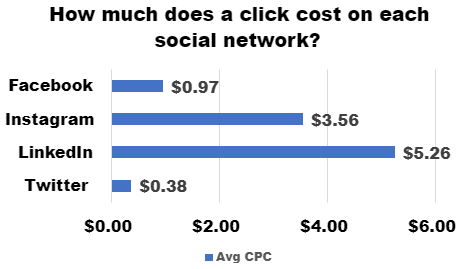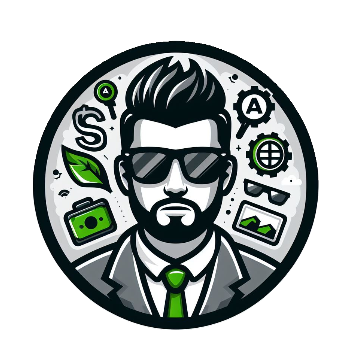Why use Social media for marketing?
Using social media to sell your product or service is a low-cost approach to communicating with current consumers while also attracting new ones.
Customer relationships can be strengthened by aligning your marketing, customer support, and sales operations on social media.
Those businesses that manage social media campaigns develop genuine, long-lasting ties with their clients.
Your firm may learn what customers have to say about your company, goods, and competitors. You can execute more effective social media marketing efforts by driving the conversation with client feedback.
Not only that, but you may utilize this data to make well-informed product decisions in the future.
The costs of using Social media.

Many content marketing initiatives, including creating a social media account, are completely free. Paid choices, such as advertisements, are less expensive than traditional advertising approaches.
If you are just starting you can post for free across the social media platforms of your choice, but eventually, you will want to scale up to an advertising campaign. Why? You will get a better return for your efforts if you use paid advertising.
Free versus paid advertising.
You have more control over the information that reaches customers when you use paid advertising. The fees vary, but it may be worthwhile because it lets you focus your campaign on what matters to you and your business.
You may increase your online authority for a fraction of traditional advertising methods.
An example of costs
Facebook.
You have four bidding choices on Facebook.
- CPC (cost-per-click) advertising means that you only pay when someone clicks on your ad.
- CPM (cost-per-thousand impressions): You only pay when 1000 people see your ad.
- CPL (cost-per-like): You only pay for your ad if someone likes your company page.
- CPA (cost-per-action) advertising: You only pay for your ad when someone clicks on it.

YouTube.
YouTube has over 1 billion views per day, so in my opinion, is a crucial platform to advertise on.
Three options are shown.
- CPC (cost-per-click): When someone clicks on your YouTube ad, you pay.
- CPM (cost-per-thousand impressions): You pay when 1000 people see your YouTube ad.
- Cost-per-view (CPV): When someone watches your video ad for 30 seconds or to the conclusion, you pay.

Pinterest.
Pinterest is used by a quarter of a billion people every month. Pinterest provides a unique opportunity for business-to-consumer companies to reach and engage with their target market. It does, however, come with a larger cost of advertising.
Pinterest currently has two options.

Linkedin.
You have four options on LinkedIn
- CPC (cost-per-click): You only pay when someone clicks on your LinkedIn ad
- CPM (cost-per-thousand impressions): With CPM, you only pay when your LinkedIn ad is seen by 1000 people.
- Cost-per-send (CPS): With CPS, you pay for each sponsored email you send to a user.
- CPO (cost-per-open): You pay every time someone opens your sponsored email with CPO.

You have four bidding options on Instagram, similar to Facebook.
- CPC (cost-per-click): You are charged each time someone clicks on your ad.
- CPM (cost-per-thousand impressions): You pay when 1000 people see your advertisement.
- CPL (cost-per-like): You are charged each time someone likes your post.
- CPA (cost-per-action): You pay each time someone performs your desired action, such as making a purchase.

What is an effective marketing budget?
How much should you spend on content marketing and social media marketing together?
Keep in mind that the Small Business Administration suggests investing 7-8% of gross income to marketing.
Let’s imagine you made $200,000 in gross revenue last year. Your entire marketing expenditure should be in the range of $14,000 to $28,000
Just started?
This is out of the question for those who are just beginning off. As a result, modest campaigns of $200 to $1,500 might be a good way to test the waters.
And with all the above platforms you can start with a monthly ad spend of between $200.00 to $1,500. Don’t just rely on organic traffic, because the competition is fierce.
Organic versus paid promotions.
The methods of attaining organic and paid followers on social media are continuously changing. New networks emerge (e.g., MeWe). And new technology boosts user involvement as established networks improve their platform and services.
As the top networks scale up their paid social media channels to monetize platform investment, organic reach is diminishing as well.
More food for thought.
And we should also take into account those platforms that are losing members. Instagram being one. Do you want to invest your money into a platform that is steadily losing customers?
Also, look at your market and find the best social media platform that is a fit for your business and customers profile.
The difficulty here is determining who your target audience is. If you have a CRM ( Customer relationship management) database and can profile and segment your customers specifically and export targeted lists to social media for advertising
Don’t forget your content.
Two of the most significant aspects of digital marketing are content marketing and social media. These two strategies have been demonstrated time and time again to deliver a big return on your marketing spend investment.
Upgrading your content for social media is very important if you wish to be ahead of the pack.
So it’s not a question of if you’ll have to do it; it’s a question of when and with whom you’ll spend your money.
Pay-per-click advertising on Yahoo and Bing.
While these are search engines and not social media sites they should not be forgotten in your overall approach to online advertising.
You can find more information about Pay per click advertising by accessing the free training above.
For More Information.
You can contact me on my favorite social platforms below. Stephen.
Any or all links on this site may be affiliate links, and if you purchase something through those links I will make a small commission on them.
There will be no extra cost to you and at times due to my affiliation, you could actually save money.
You can read our full affiliate disclosure here.


